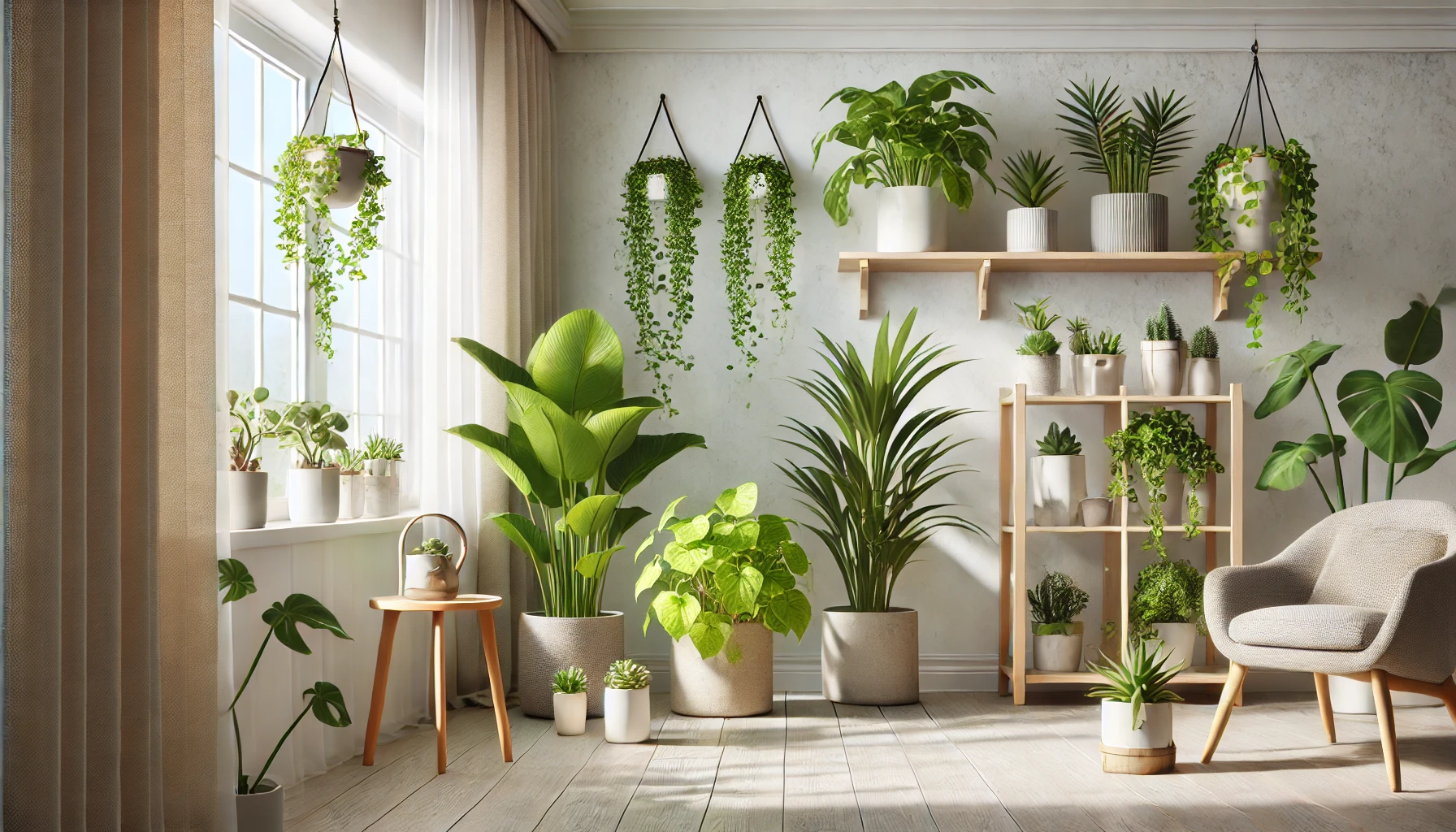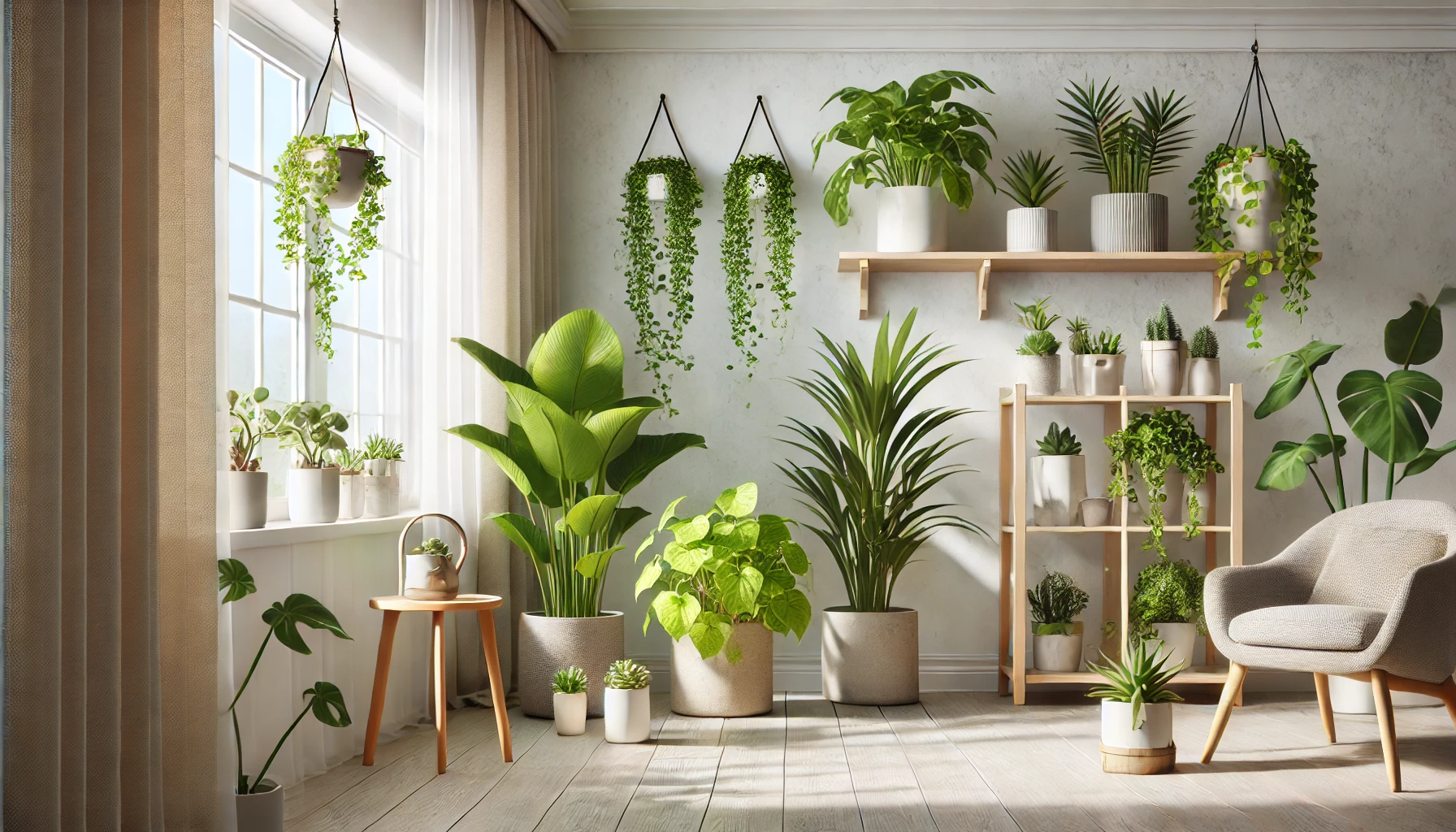Transform Your Space with Indoor Plants: A Guide to Bringing Nature Indoors

Introduction
Indoor plants are more than just decorative elements; they are living companions that can breathe life into your home, improve air quality, and create a serene atmosphere. Whether you’re a seasoned plant parent or a beginner, incorporating houseplants into your living space can transform the ambiance, boost your mood, and even enhance productivity.
The Benefits of Houseplants
Indoor plants offer a wide array of benefits. Here are some of the most compelling reasons to welcome plants into your home:
- Improved Air Quality: Plants like spider plants and peace lilies act as natural air purifiers, removing toxins and adding oxygen to the air.
- Stress Reduction: Studies have shown that having greenery in your home can lower stress levels and promote relaxation.
- Enhanced Productivity: A desk adorned with plants can improve focus, creativity, and overall productivity.
- Aesthetic Appeal: Plants add texture, color, and depth to your interior design, making your space more vibrant and inviting.
Choosing the Right Plants for Your Space
Selecting the right plants is crucial to ensure they thrive in your home. Consider these factors:
1. Lighting Conditions
Different plants have varying light requirements. For low-light areas, consider plants like pothos, snake plants, or ZZ plants. For brighter spaces, succulents, fiddle-leaf figs, and rubber plants are excellent choices.
2. Maintenance Level
If you’re new to plants or have a busy schedule, opt for low-maintenance options like cacti, peace lilies, or philodendrons.
3. Space Availability
For small spaces, go for compact plants like succulents or hanging plants. Larger areas can accommodate statement plants like monstera or fiddle-leaf figs.
Incorporating Plants into Your Decor
Integrating plants into your interior design doesn’t have to be challenging. Here are some ideas:
- Shelves: Arrange small plants like succulents or ferns on bookshelves for a touch of greenery.
- Hanging Planters: Use macramé hangers or wall-mounted pots to save floor space while adding visual interest.
- Corner Focal Points: Place tall plants like palms or fiddle-leaf figs in empty corners to create a stunning focal point.
- Tabletop Accents: Add small potted plants to coffee tables, dining tables, or nightstands for a cozy vibe.
Maintenance Tips for Thriving Plants
Keeping your plants healthy and vibrant requires regular care. Follow these tips to ensure your green friends thrive:
- Watering: Understand the watering needs of each plant. Overwatering is a common mistake; let the soil dry out between watering for most indoor plants.
- Lighting: Rotate your plants occasionally to ensure even light exposure.
- Dusting: Wipe down leaves with a damp cloth to keep them clean and maximize photosynthesis.
- Fertilizing: Use a balanced fertilizer during the growing season to provide essential nutrients.
Conclusion
Incorporating indoor plants into your living space is a rewarding and enriching experience. Not only do they elevate your home’s aesthetics, but they also contribute to your well-being in countless ways. With the right selection and care, your home can become a lush sanctuary filled with life and tranquility. Start small, experiment, and enjoy the journey of creating a greener, more inviting space.


